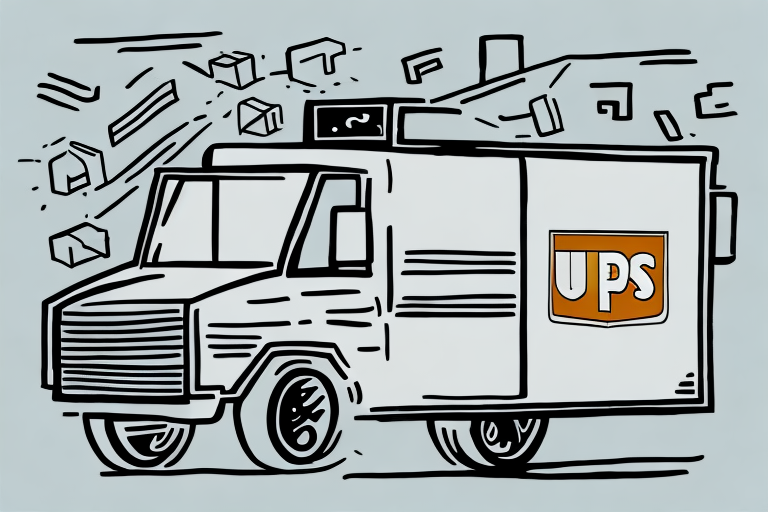Understanding the UPS Claims Process
Filing a claim with UPS requires a clear understanding of their specific procedures and requirements. UPS handles various types of claims, including damage claims, lost package claims, and billing discrepancies. To initiate a claim, you must provide thorough documentation, such as proof of the item's value and evidence of the issue, like photographs of damaged goods.
Once submitted, you can monitor your claim’s progress through the UPS claims portal, receiving updates via email. According to UPS’s official guidelines, claims for domestic shipments must be filed within nine months of delivery, while international claims have a shorter window of 60 days. Adhering to these timeframes is crucial to avoid claim denial.
Common Reasons for Filing a UPS Claim
Customers typically file UPS claims for several reasons:
- Damaged Packages: Items that have been mishandled or damaged during transit.
- Lost Packages: Situations where the package never reaches its intended destination.
- Incorrect Billing: Errors in shipping charges or services billed.
- Misdelivery: Packages delivered to the wrong address due to labeling errors or driver mistakes.
Understanding the specific reason for your claim is essential, as it determines the eligibility and the payout you may receive.
Resolving Your UPS Claim
Approved Claims: Your Next Steps
After UPS approves your claim, you have several resolution options:
- Refund: Receive a full or partial refund based on the claim specifics.
- Replacement: UPS may offer to send a replacement for the lost or damaged item.
- Repair: For items that can be repaired, UPS might handle the repair process.
Evaluate each option carefully to choose the one that best suits your needs. If additional documentation is requested, provide it promptly to expedite the resolution process.
Receiving Your UPS Claim Payout
The payout timeline depends on the resolution option selected. For instance:
- Account Credits: Typically processed within a few business days.
- Check Payments: May take longer due to mailing procedures, usually within two weeks.
Ensure you review the payout amount for accuracy. If discrepancies are found, contact UPS customer service for clarification.
Tips for Safely Packing and Shipping with UPS
Preventing future claims by packing items securely is key. Here are some best practices:
- Use Sturdy Containers: Opt for strong, durable boxes appropriate for the item’s weight and size.
- Protect Fragile Items: Utilize materials like bubble wrap, packing peanuts, or foam inserts to cushion delicate items.
- Proper Labeling: Clearly label packages with accurate addresses and handling instructions.
- Seal Packages Securely: Use high-quality packing tape to reinforce all seams and edges.
Additionally, consider purchasing additional insurance for high-value items to offer extra protection during transit.
How to File a UPS Claim: Step-by-Step Guide
- Gather Documentation: Collect proof of value, shipping receipts, and photographs of any damage.
- Submit Your Claim: File the claim through the UPS claims portal, providing detailed information.
- Receive Confirmation: UPS will send a confirmation email with a claim number for tracking.
- Wait for Review: UPS reviews the claim and may request additional information.
- Receive Settlement: If approved, choose your payout option. If denied, consider appealing.
Avoiding Common Mistakes When Filing a UPS Claim
To ensure a smooth claims process, avoid these common pitfalls:
- Insufficient Documentation: Always provide complete and clear evidence supporting your claim.
- Missing Deadlines: File claims within the specified timeframes to prevent denial.
- Incorrect Claim Reason: Select the appropriate category for your claim to ensure proper handling.
- Poor Packaging: Properly package items to avoid claims related to damage during transit.
By addressing these areas, you increase the likelihood of a successful claim resolution.
Navigating the Appeals Process for Denied UPS Claims
If your claim is denied, you have the right to appeal the decision. Follow these steps to strengthen your appeal:
- Review the Denial Reason: Understand why your claim was denied as stated by UPS.
- Gather Additional Evidence: Provide any new documentation or clarification to support your case.
- Submit an Appeal: Follow UPS’s official procedures for appeals, ensuring all required information is included.
Persistence can sometimes lead to a reconsideration of your claim, especially if new evidence is presented.
Understanding UPS Insurance Coverage and Limits
UPS offers various insurance options to protect your shipments:
- Declared Value Coverage: Allows you to declare a higher value for your package, providing increased coverage in case of loss or damage.
- Additional Liability Coverage: Offers extra protection beyond the standard limits.
Review the terms and conditions of your shipping agreement to understand the coverage limits and any exclusions. This knowledge ensures you have adequate protection based on your shipment's nature and value.
Additional Resources and Support
For more detailed information, refer to the following reputable sources:
Staying informed and proactive can help you navigate the UPS claims process effectively and ensure your shipments are protected.






















